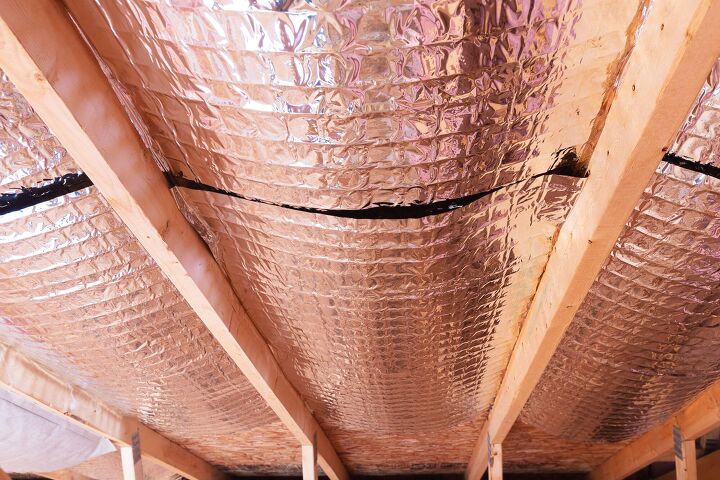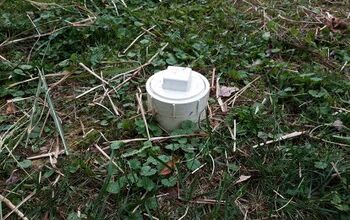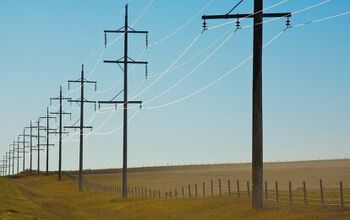How Much Does Radiant Barrier Installation Cost?

Commonly installed in the attics of homes in hot climates, radiant barriers are very effective at keeping your home cooler in the summer and reducing energy costs. In fact, the U.S. Department of Energy states that cooling costs could be reduced by five to 10 percent, while some sources claim even hiring savings. If you’ve been considering installing radiant barriers in your attic, one of your first thoughts may be how much the project is going to cost.
The average radiant barrier installation cost $1,700, and the materials alone cost $0.80 per square foot. Homeowners spend an average of $50 per hour on labor costs, and labor totals $800 for radiant barrier installation in an attic. Radiant barriers save homeowners $120 per year, and you can get a tax credit for $175.
Continue reading for our comprehensive guide on radiant barrier installation costs, so you can have a broader understanding of how to properly budget for this project and start saving on your energy bills!
Do You Need Insulation Installers?
Get free, zero-commitment quotes from pro contractors near you.

What is a Radiant Barrier?
A radiant barrier is a form of reflective insulation that is usually installed in an attic to help reduce energy costs by keeping your home cooling in hot conditions. Radiant barriers also help keep your home warmer during winter, but works to a lesser degree than in the summer. They do this by substantially diminishing the transfer of radiant heat by either reflecting it away from the surface or emitting a very small amount of heat from the surface opposite the heat source. In either case, radiant barriers provide a permanent way to control radiant heat.
Essentially, radiant barriers are designed to block radiant heat energy rather than absorb it – like conventional insulation does (cellulose, fiberglass, etc.). As an added bonus, radiant barriers are unaltered by humidity and continue to perform at a consistent level regardless of how humid the climate is. These barriers are made by coating a substrate material with a reflective material. In most cases, aluminum is used as the reflective metal, while the most common substrate materials are plastic film, cardboard, strand board, and Kraft paper.
To create a radiant barrier, professionals typically install metal foil over the rafters in the attic to help reflect the sun’s heat away from your home. When combined with reflective insulation, this is the most effective method. In order to maximize cooling efficiency, the system must also feature an air gap between the interior of the roof and the reflective material. Not only do radiant barriers lessen the impact of the summer heat, they also help homeowners lower their cooling costs.
What Classifies a Radiant Barrier?
According to the Department of Energy (DOE), a product can be classified as a “radiant barrier” when it has a low emittance of 10% or less and a high reflectance of 90% or more.
How Radiant Barriers Work
When the sun heats up your roof, it’s mostly the radiant energy from the sun that causes the roof to get hot. Much of this heat travels via conduction through the roofing materials and into the attic space. The heated roof material then radiates its gained heat energy onto the cooler attic surfaces, such as the floor and air ducts.
This is when radiant barriers come in, as they reduce the radiant heat transfer from underneath the roof to the other surfaces in your attic space. Radiant barriers function best when installed perpendicular to the radiant energy hitting it. The greater the temperature difference between the sides of the radiant barrier material, the greater the radiant barrier will perform. As such, radiant barriers are more effective in hot climates than cooler climates.
Radiant Barriers vs. Reflective Insulation
It’s important to note that although both radiant barriers and reflective insulation systems function by reducing radiant heat gain, they are different. Reflective insulation refers to insulating materials, such as batt and roll insulation, that has at least one surface that is reflective.
Radiant barriers, on the other hand, do not have insulating material attached. However, radiant barriers can be installed over new or existing insulation to maximize the efficiency of both materials.
Breakdown of Radiant Barrier Installation Cost
The cost of installing radiant barriers in your attic will vary from home to home, depending on how you plan to install them. When it comes to estimating costs, consider the following main factors:
- Cost of materials
- Surface area that needs covered
- Location of the radiant barrier
- DIY installation vs. hiring a professional
All of these factors will play a role in the savings that you experience both short-term and long-term. While it may be tempting to cut costs early on, improper installation and using ineffective materials will diminish returns on energy savings.
With that said, installing radiant barriers costs an average of $740 to $2,840, with most homeowners paying around $1,700. Materials could be as low as $0.10 per square foot, or as much as $1.50 per square foot. The costs of installation will vary depending on the location, complexity of the job, and the contractor. Although most professional installers charge between $30 and $80 an hour for this project.
The table below displays a visual overview of the average radiant barrier installation costs:
| Average Cost | $1,700 |
| Low End Cost | $740 |
| High End Cost | $2,840 |
Cost of Materials
Like any other product, radiant barriers come in many forms. The most affordable option are single-sided barriers which, as the name suggests, only have the reflective material on one side and tend to tear easily. Of course, more expensive materials have higher durability and are easier to install.
Using higher-quality radiant barrier materials is strongly recommended, especially if you’re considering installing the barriers yourself. Cheap materials have a harder time holding a staple and will be generally less effective at shielding heat.
Double-sided radiant barriers are pricier than their one-sided counterparts, costing up to $0.90 per square foot. Whereas, one-sided radiant barriers range from $0.10 to $0.25 per square foot on average. Two-sided foil reflects heat on both sides, and one-sided only has the reflective material on one side.
| One-Sided Foil | $0.10 to $0.25 per square foot |
| Two-Sided Foil | $0.90 per square foot |
Surface Area
Radiant barrier installation costs are determined based on square footage. To experience ideal cooling cost reduction, the radiant barriers you install need to cover the entire surface area of your attic. The cost of materials for covering your attic with radiant barriers can be determined by multiplying the total surface area of the space you want to cover by the cost per square foot of the radiant barrier material you’ve chosen.
When calculating this cost, you may have to consider more than just your attic ceilings and floors – as many older homes will have HVAC equipment and ductwork. For these types of homes, cooling costs savings from radiant barriers is often the highest provided that these additional surfaces are covered.
Attic Installation
Radiant barriers are best suited for attics. To add radiant barrier insulation to a 1,000 square foot attic, you’re looking at spending between $100 and $1,500 for labor alone, and between $200 and $2,500 for both labor and materials. Of course, larger attics and more difficult products will raise the price. It’s important to note that the cost to have a radiant barrier installed on the attic floor is generally cheaper than fastening it to the attic roof.
DIY vs. Hiring Professional Radiant Barrier Installer
If improperly installed, radiant barriers cannot perform at peak capacity. The United States Department of Energy urges that homeowners hire a professional radiant barrier installer to ensure that the job is done right. However, that’s not to say that it isn’t possible for homeowners to handle the installation themselves.
Homeowners that choose to DIY the installation of their radiant barriers won’t have to worry about installation fees, but doing some comes with its own risks. Here are some things you should consider if you decide to install radiant barriers yourself:
- Wear the necessary protective equipment. Insulation can cause irritation to the lungs and skin when handled. Before you start this project, make sure that you have protective clothing, eye protection, and some form of breathing protection.
- Practice care around electrical wiring. Factoring hospital costs into your budget is not ideal. When you’re installing radiant barriers, be especially careful when stapling near junction boxes and electrical wiring. The reflective foil will conduct electricity, so it is crucial that you avoid making contact with bare electrical wiring. If you’re ever concerned about your safety, we strongly recommend hiring a professional.
- Avoid compressing existing insulation. Compressing existing insulation in your attic while installing radiant barriers will decrease, instead of increase, your cooling costs. Since attic insulation is dependent on its thickness for efficacy, flattening out the existing insulation will decrease its resistance value.
- Be careful of where you step. In general, unfinished attics can be hazardous places. Oftentimes, they have toxic materials, loose nails, and inconsistent headspace. Only work when the temperature sin the attic are safe, and limit your foot traffic to joists so you avoid falling through the ceiling.
- Study and follow the manufacturer’s instructions. If you decide to handle the installation yourself, pay close attention to the instructions from the manufacturer. You’ll also want to check your local building and fire codes. Consult the Reflective Insulation Trade Association for more beneficial installation tips.
Although hiring a professional to install your radiant barriers may increase the overall cost of installation, it helps prevent incurring hidden costs like hospital bills and ceiling repair. Not to mention, you will be able to ensure proper installation and avoid lowering the R-values of your existing insulation.
Radiant Barrier Installation
As previously mentioned, the effectiveness of radiant barriers solely depends on proper installation – which is why it is recommended to hire a certified installer. Although it’s easier to install radiant barriers into a new home, they can still be incorporated into an existing home, especially in homes with an open attic.
For new homes, the installation is typically done by draping rolled-foil radiant barrier with the foil-face down between the rafters of the roof. This helps reduce the accumulation of dust on the reflective surfaces. In most cases, radiant barriers are installed before the roof sheathing but can it can still be done afterwards from inside of the attic. This involves stapling the reflective material to the bottom of the rafters.
When installing a foil-type radiant barrier, it’s crucial that the material “droops” between the attachment points – allowing for at least a 1 inch (2.5 cm) air space between the material and the bottom of the roof. If installed on the top of the attic floor insulation, the foil will be vulnerable to dust accumulation and could trap moisture in fiber insulation. With that said, it’s strongly recommended that you don’t apply radiant barriers directly atop attic floor insulation.
Radiant Barrier Savings
With properly installed radiant barriers, it is estimated that homeowners in hot climates can save up to 10 percent on their energy bills, equating to about $120 off per year. In some cases, the reduced heat gain may allow you to use a smaller air condition system to service your home.
Meanwhile, those who live in cooler climates will only save about $15 per year on average by upgrading to radiant barriers. In cool climates, it’s often more cost-effective to just install more thermal insulation than to install a radiant barrier in your attic. However, if homeowners upgrade to R19 insulation, they can expect savings of between $180 and $300 on their energy bills.
Radiant Barrier Tax Credit
Since radiant barriers are considered an energy conservation product that helps the environment, many governments will issue a tax credit to homeowners that have it installed in their home. Currently, in the United States, any qualified material that was installed from 2015 to 2021 is eligible for a tax credit.
The credit applies to materials that were purchased and installed in an existing residential construction between January 1,2015 and December 31, 2021. Homeowners who qualify will enjoy 10% of the cost up to $500, or a specific amount of $50 to $300. Cost of labor, however, is not eligible for a tax credit under this incentive. For more information, visit the DOE website.
Do Radiant Barriers Work?
In the summer months, the sun can really heat up your home and make it both uncomfortable and even unhealthy for its inhabitants. Radiant heat is what causes homes to get hot especially hot during this time, and up to 90% of the heat gain in a home is the result of radiant heat. What a radiant barrier does is reflect the heat away from the home instead of absorbing it like a standard home would do.
With this in mind, yes, radiant barriers are an energy-efficient upgrade that will not only cool down your home when it’s needed most but will also save you as much as 10% on your energy bills.
Do You Need Insulation Installers?
Get free, zero-commitment quotes from pro contractors near you.

Related Questions
What is the R-value of radiant barriers?
Radiant barriers, on their own, do not have an R-value. This rating system is exclusive to materials that slow down conductive heat – such as blown-in or bat and roll insulation. However, radiant barriers can work in tandem with other insulating materials to increase their effectiveness.
Are radiant barriers better than insulation?
In some cases, radiant barriers can be more effective at keeping your home cool than insulation. However, radiant barriers usually perform best when they are combined with conventional insulation.
Can radiant barriers cause mold?
If not installed correctly, radiant barriers can cause mold. However, having the barriers installed by a professional will reduce the risk of this problem occurring.
Related Articles

Jessica considers herself a home improvement and design enthusiast. She grew up surrounded by constant home improvement projects and owes most of what she knows to helping her dad renovate her childhood home. Being a Los Angeles resident, Jessica spends a lot of her time looking for her next DIY project and sharing her love for home design.
More by Jessica Stone



















![10 Most Dangerous Neighborhoods in Baltimore [Updated]](https://cdn-fastly.upgradedhome.com/media/2023/07/31/9075655/10-most-dangerous-neighborhoods-in-baltimore-updated.jpg?size=350x220)







